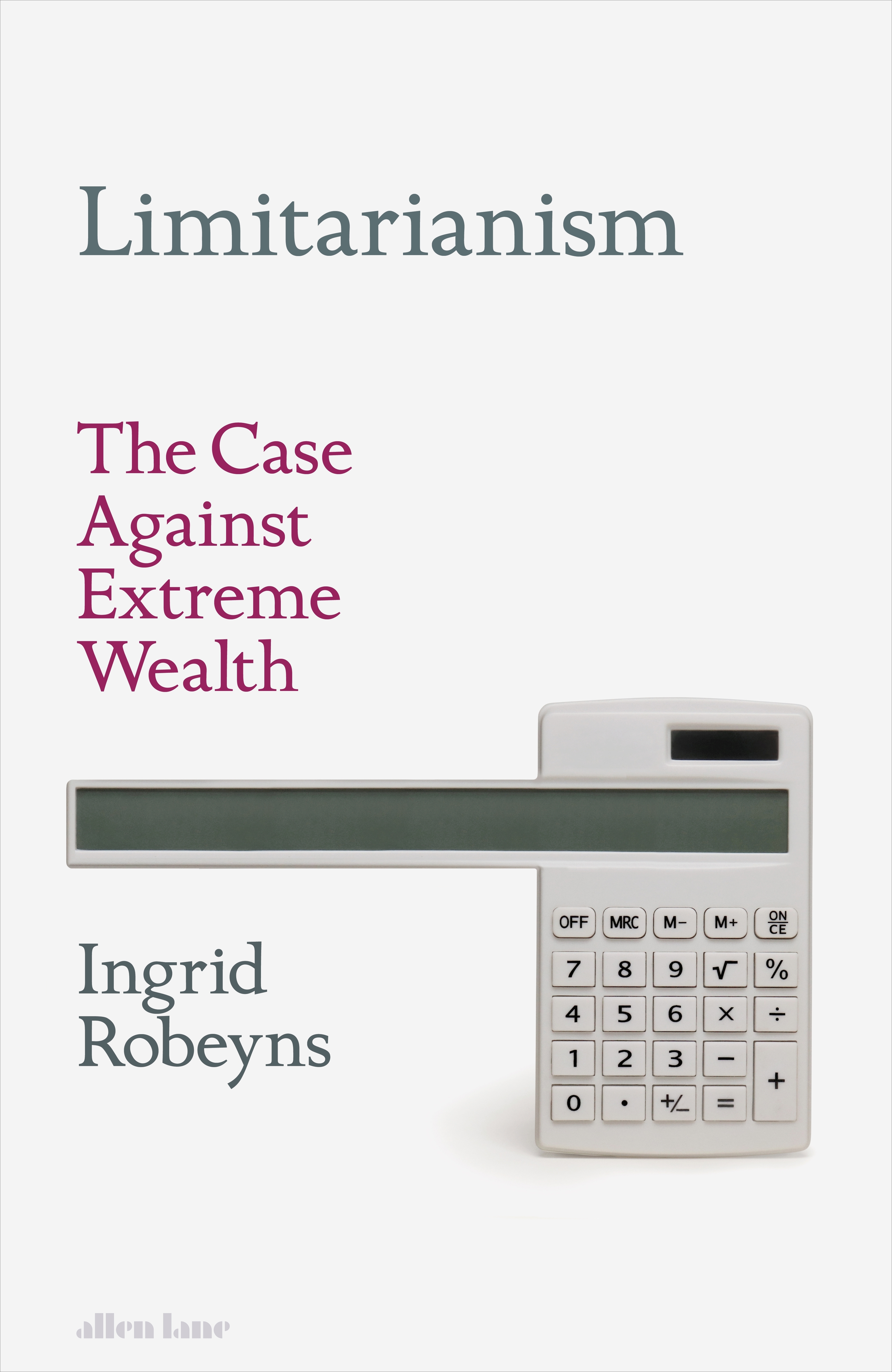
- Free Article: No
- Contents Category: Politics
- Review Article: Yes
- Article Title: Time’s up?
- Article Subtitle: The prodigality of the super-rich
- Online Only: No
- Custom Highlight Text:
Can people have too much wealth? Does extreme wealth have negative consequences? Over the past thirty years, there has been a remarkable rise in the number of billionaires whose annual earnings are so large that they are often difficult to comprehend. To take but one example, it was estimated in 2022 by Forbes magazine that Elon Musk’s personal assets were worth $219 billion and that, if he worked for forty-five years, his lifetime hourly rate from these assets was in the order of US$1,871,794.
- Featured Image (400px * 250px):

- Alt Tag (Featured Image): Adrian Walsh reviews ‘Limitarianism: The case against extreme wealth’ by Ingrid Robeyns
- Book 1 Title: Limitarianism
- Book 1 Subtitle: The case against extreme wealth
- Book 1 Biblio: Allen Lane, $55 hb, 328 pp
- Book 1 Cover Small (400 x 600):

- Book 1 Cover (800 x 1200):

But this raises a question: should we place a limit upon how much any one individual can own? And how would we set such a maximum?
In this highly ambitious book, the Dutch political philosopher Ingrid Robeyns explores and develops an innovative and provocative theory she labels ‘limitarianism’. According to the limitarian, there must be a state-regulated cap on the amount of assets any one person can own, for we do not need, and should not own, goods beyond what is required for us to flourish. Robeyns refers to this point as the ‘riches level’, which is her technical term for the point when additional money cannot increase one’s standard of living, at least in a significant way.
Robeyns provides a numerical figure for the limit which she sets at ten million pounds, euros, or dollars: no one should be allowed to own wealth beyond this level. This figure she regards as a ballpark figure – for those curious about the exchange rates – which is not so much about the actual number as it is about the ‘reasons why a world without extreme wealth concentration would be better for all of us’.
Limitarianism – at least as Robeyns conceives of it – is not only focused on public policy: it is also intended to function as an ethical theory that encourages those of us with excess assets to limit our own wealth. Hence there are two upper limits. The higher one is political and concerns the limit that ‘our social structures and fiscal system should enforce’, while the lower one is personal, and is where individual ethics come into play. The ethical limit is the maximum amount of money one can own on moral grounds. It is the point at which we cannot in ‘good conscience’ keep excess resources. Robeyns acknowledges that bringing about such a limitarian society would indeed be extremely difficult and, as such, it is best thought of as a regulative ideal towards which we might aim.
The book is aimed at a general readership rather than at political theorists. It contains myriad examples of the prodigality of the super-rich, as well as intriguing tales of members of this class, such as Abigail Disney, who advocate higher levels of taxation for the super-rich. Robeyns has lectured widely in recent years defending limitarianism and has clearly (and unsurprisingly) met much resistance. A significant portion of the book is taken up with responding to objections to her proposal.
Limitarianism is, according to Robeyns, a distinctive political theory that should not be confused with egalitarian theories that focus primarily on differentials between people. Robeyns stresses that, for pragmatic reasons, she is not a strict egalitarian. Nor, curiously, does she defend progressive taxation.
Limitarianism, in one important sense, is not really a new idea. Proto-limitarian sentiments can be found in many popular discussions about the ills of extreme wealth. And Robeyns is not the first political theorist to contemplate limiting wealth. For instance, Plato argues in his dialogue The Laws that, in the ideal society, the assets of the wealthiest should not be more than four times those of the least well-off. His concern here was primarily with the stability of any political community.
But Robeyns’s concerns with extreme wealth are far more extensive than Plato’s. First, she suggests that extreme wealth undermines democracy. The power that the super-rich possess, as a direct consequence of their wealth, allows them to influence democratic processes in ways that make a mockery of the ideals of equal citizenship. Secondly, Robeyns claims that the power of the super-rich is implicated in the rapacious greed of our economic system, which, in turn, is the main cause of anthropogenic climate change. Those who cannot be satisfied simply with what is materially sufficient for a prosperous life are likely to have little interest in scaling back the extent of harmful greenhouse-producing practices. Robeyns, then, presents limitarianism as a general panacea for these political and environmental crises.
While the book provides a compelling critique of the excesses of the super-rich, it is less successful in developing a distinctive stand-alone position in political philosophy. One does not need to be a limitarian to believe that the current distribution of wealth holdings across societies such as ours is unacceptable. Moreover, at crucial points in the argument Robeyns relies on bog-standard claims about the importance of political equality. In truth, rather than being regarded as a new philosophical doctrine, limitarianism is probably best thought of as a form of egalitarianism, admittedly one that involves a specific policy prescription concerning the upper limits of wealth. At its core, limitarianism is grounded in concerns about fairness, the distribution of resources, and the impact of excessive wealth on democratic processes and societal well-being, all of which fit within a broadly egalitarian framework. It is also not clear to me that the problems she identifies – such as the climate crisis – can be entirely sheeted home to the lack of limits on extreme wealth.
I found Robeyns’s rejection of progressive taxation perplexing. She writes: ‘This [limitarianism] does not necessarily translate into a 100 per cent tax rate upon income above the political limit. Ideally, a package of different measures should together dilute extreme wealth concentration.’ Surely a more radical theory of progressive taxation, which involves a 100 per cent tax rate at the higher end, is de facto a form of limitarianism?
These critical comments about the status of limitarianism as a stand-alone theory should not be read as a rejection of the need for the change that Robeyns so eloquently highlights. Just recently – in fact at the time of writing this review – ministers from Germany, Brazil, South Africa, and Spain have called for a two per cent global tax on the income of billionaires. Ingrid Robeyns’s book provides compelling evidence as to why such redistributive measures are urgently required.


Comments powered by CComment